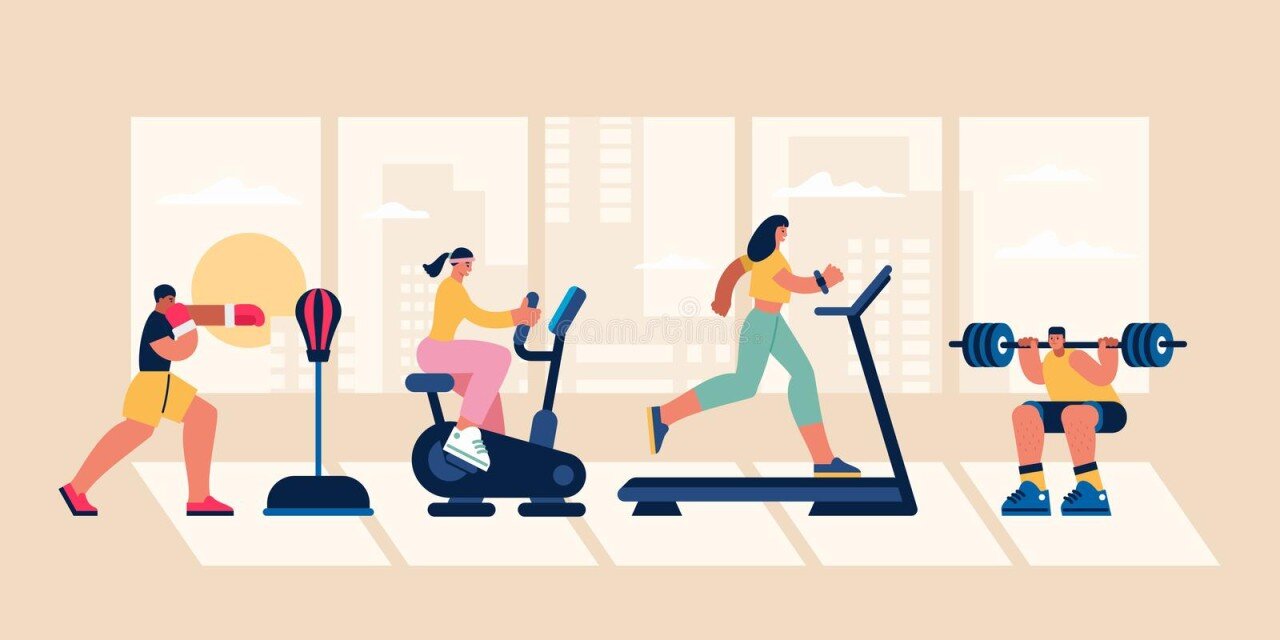Four megatrends for the fitness industry 2030
The fitness industry across the world is in the doldrums ever since the pandemic started. The end of the stress is not in sight. One panacea that everyone has tried is 'digitalization' and that is now a foregone conclusion. But then, can someone really take the physicality away from it? The pandemic is not going to last forever. Taking a 5-7 year-long view of the situation here some broad directions using megatrend, that will shape the industry.
/Courtesy- Dreamstime
1. Universal Consumers (near -medium term)
By 2027 India would overtake China in population, though the growth is decelerating every year. India is young and will continue to do so for several decades but notably, just about 50% population is Gen Z and Millennials, and this would reduce every year. Because we are also steadily walking towards aging. By 2030, the 40+ age group will see the biggest rise.
40-49 years cohort in India would total to 49mn by then
While the 0-19 years cohort would shrink by about 4% (source Euromonitor).
Increasing lifespan (72+ years by 2030), rising income of the middle-class (by 2025, India would have 48 cities with more than 40% affluent households as per BCG), better food habits and constant reskilling would also make Indian elders remain fit for work for longer times.
This poses an interesting equation for offices and workplaces where more and more mixed generations would work together. More products/services would come in for the ‘sandwich age group’ between the young and the old i.e. 45 to 65 years cohort which has been underrepresented in consumer strategy so far (Silvers have been widely discussed).
Implications for the fitness industry:
How can the experience be made inclusive in this evolving situation?
How can special focus be added to this 45+ years cohort? Club Mahindra created ‘Club Mahindra Bliss’, to cater to ‘SEENAGERS’ (50+ years cohort).
2. Impactainment (near - medium term)
Millennials and Gen Z look at things through social impact more than others. SDG, climate change, and equality already fare high on the agenda of the ‘woke’ generation. In ‘India Sustainability Report’, based on a study of 124 fashion students across India in 2020, mentioned that 97 percent of students clearly knew the difference between “organic”, “sustainable” and “ethical” and never confused them.
Infusion of social impact into everyday life is getting stronger by the day as this cohort seeks direct and measurable actions of social good or promoting sustainable practices through products they buy and activities they engage in. In the pre-Covid era, terms like pollination-tourism had caught the attention of this cohort. The growth in bicycle sales used to be 5-7%, is expected to shoot up to 15-20% in a post-Covid scenario.
Implications for the fitness industry:
How can the fitness routine, within the gym or outside, be infused with a sense of broader social impact?
The impact could be local i.e. helping a local cause/situation/group as a part of the health routine or at a global level i.e. green energy, climate change etc.
3. Hygglism (immediate/near term)
This is the evolution of DIY and COVID aftermath. Hygge (pronounced hue-guh) is a Danish word that is used when acknowledging a feeling or moment, whether alone or with friends, at home or out, ordinary or extraordinary as cozy, at your own pace. The precursor to this is the entire ‘SLOW’ lifestyle.
A generation brought up in an on-demand economy and the torch-bearer of DIY trend, would embrace the Hygge lifestyle as a natural course post-COVID. They would like to construct/make every experience at their own pace, in a small group or alone, with the stuff they have around them and with an ability to change it when so needed. This would also mean ‘hybrid’, ‘customized’ and ‘decentralized’ would have an evolved meaning in this context.
Implications for the fitness industry:
How can the fitness ecosystem become an enabler of Hygge lifestyle which may turn homes and office spaces into health spaces, with the stuff that is available around? This would also mean, the altered role of conventional ‘gyms’ as an ‘ecosystem provider’ rather than a ‘place to exercise’.
What are the contours of ‘Home-fit’ as a service that transforms homes beyond digital broadcast of fitness routines?
How can ancient Indian practices of Yoga & Ayurveda help a holistic Hygge lifestyle, as consumers dive deep into the past in search of authentic knowledge?
4. Assertive India (medium-term)
Nationalistic pride is now an established megatrend globally for the next decade. As India asserts itself on the global fora and the nationalistic pride takes the center stage, India’s glorious ancient past provides a seamless source of inspiration for the young. India would assert the massive soft power it has been sitting on. Not only the quest for authenticity and identity in the flattened world but also an ability to personalize experiences would make consumers consume and express in revitalized Indian ways. FabIndia was an early example of this trend, with the Patanjali brand fueling it further. ‘Atmanirbhar’ call recently, in light of China aggression would further enhance it.
Implications for fitness industry:
Beyond yoga and Ayurveda what elements can the fitness industry pickup, that are essential to building a holistic health routine?
How can those elements be interpreted in modern ways to repackage authenticity and pride?

